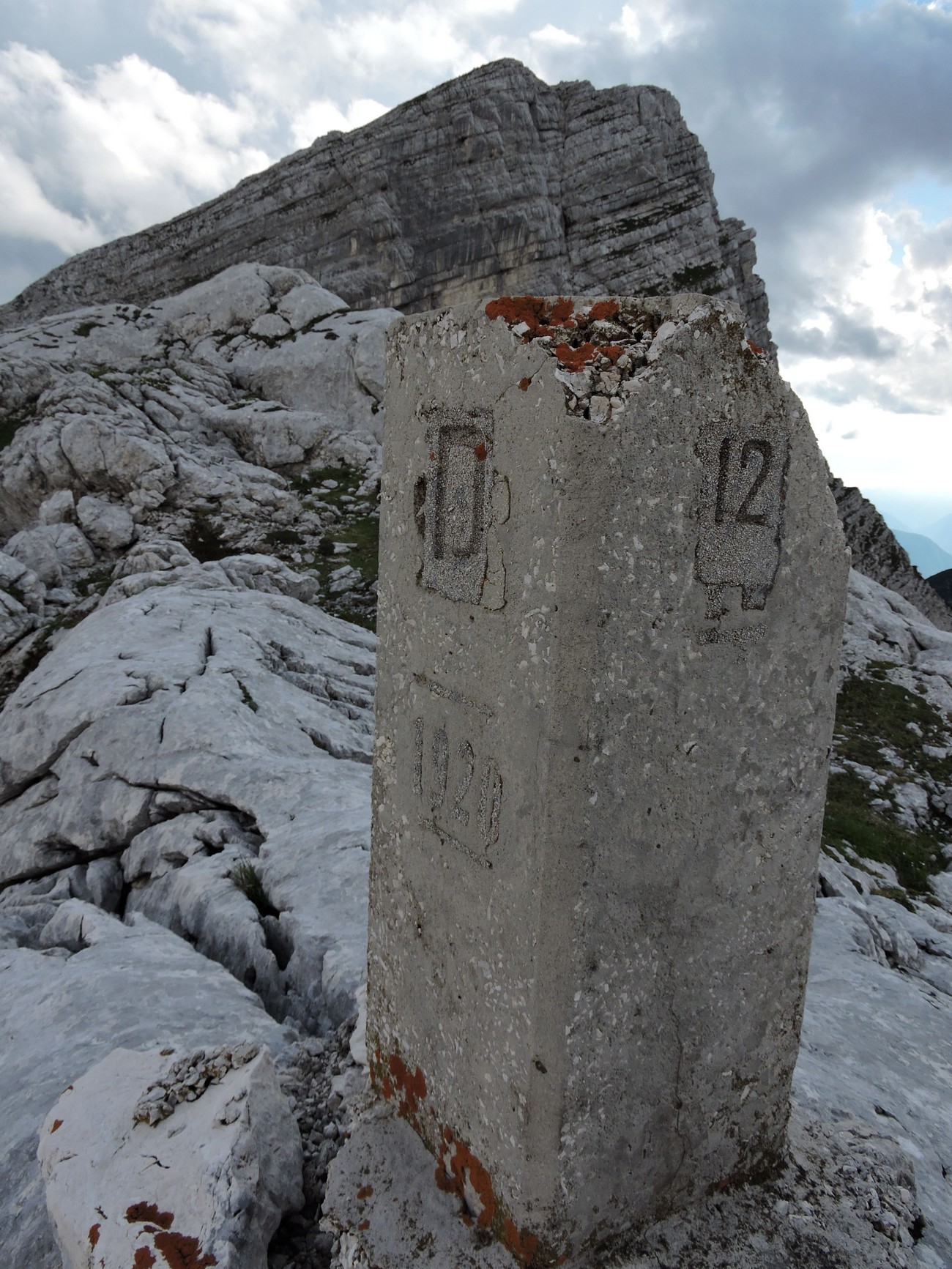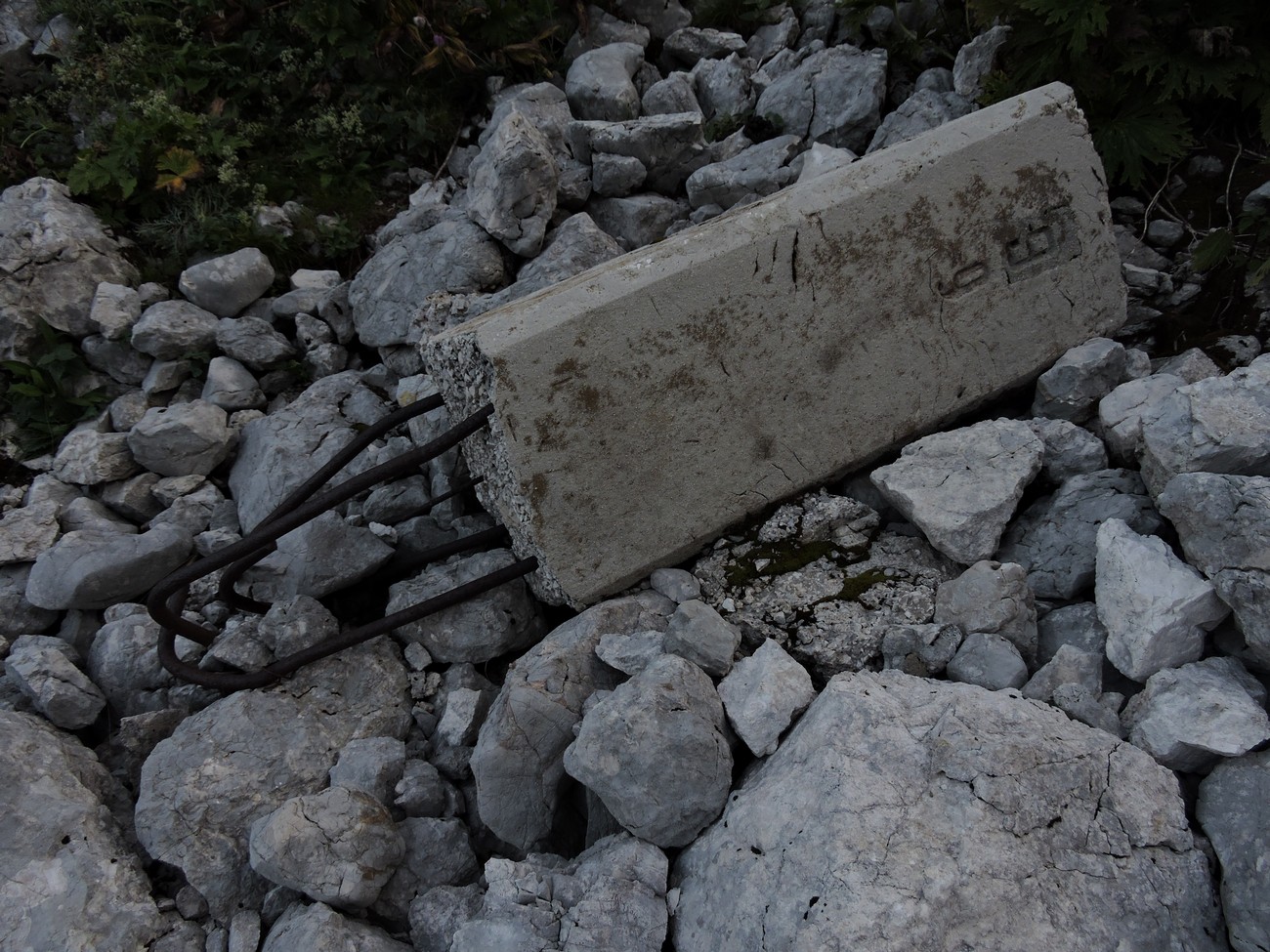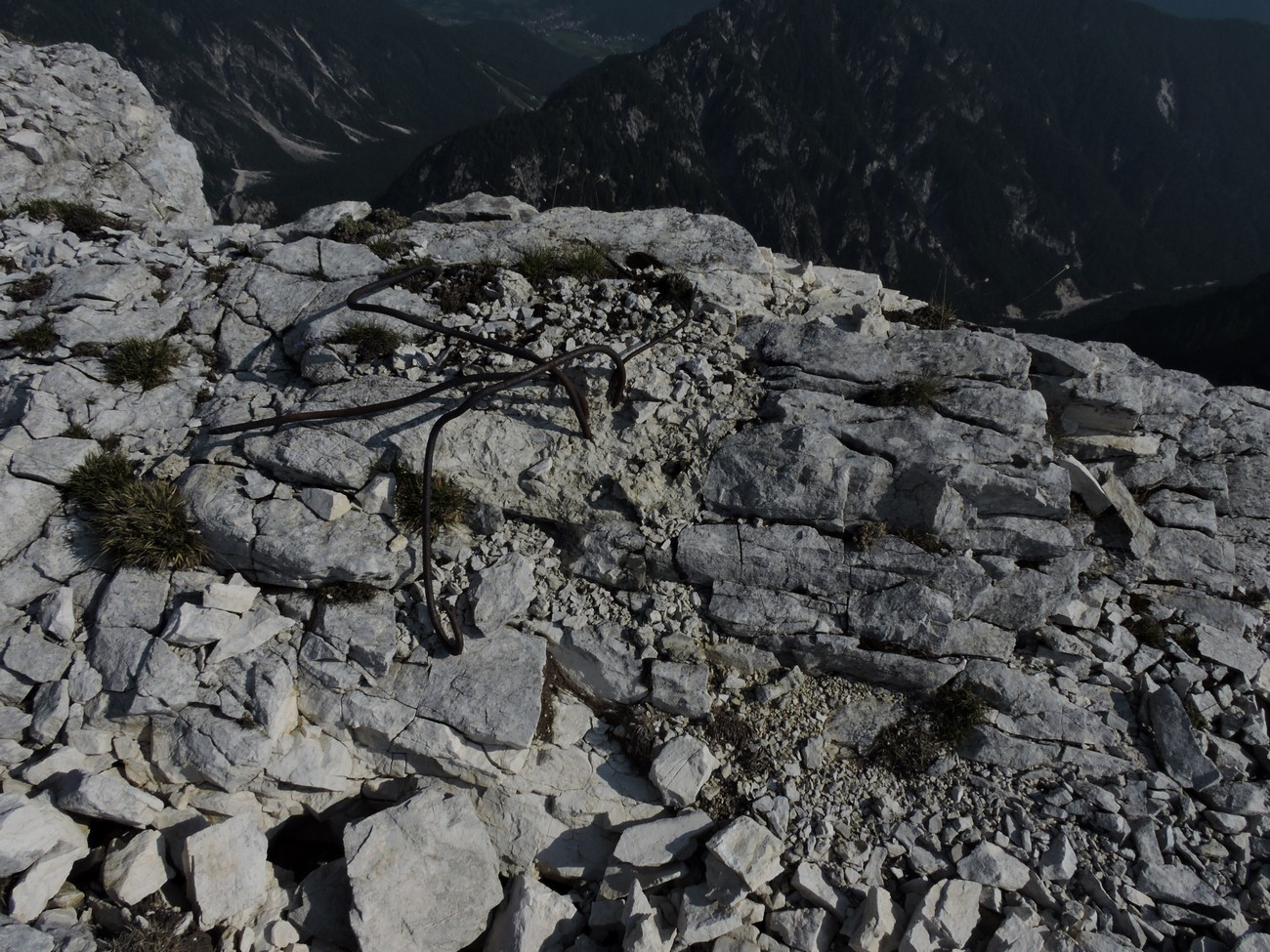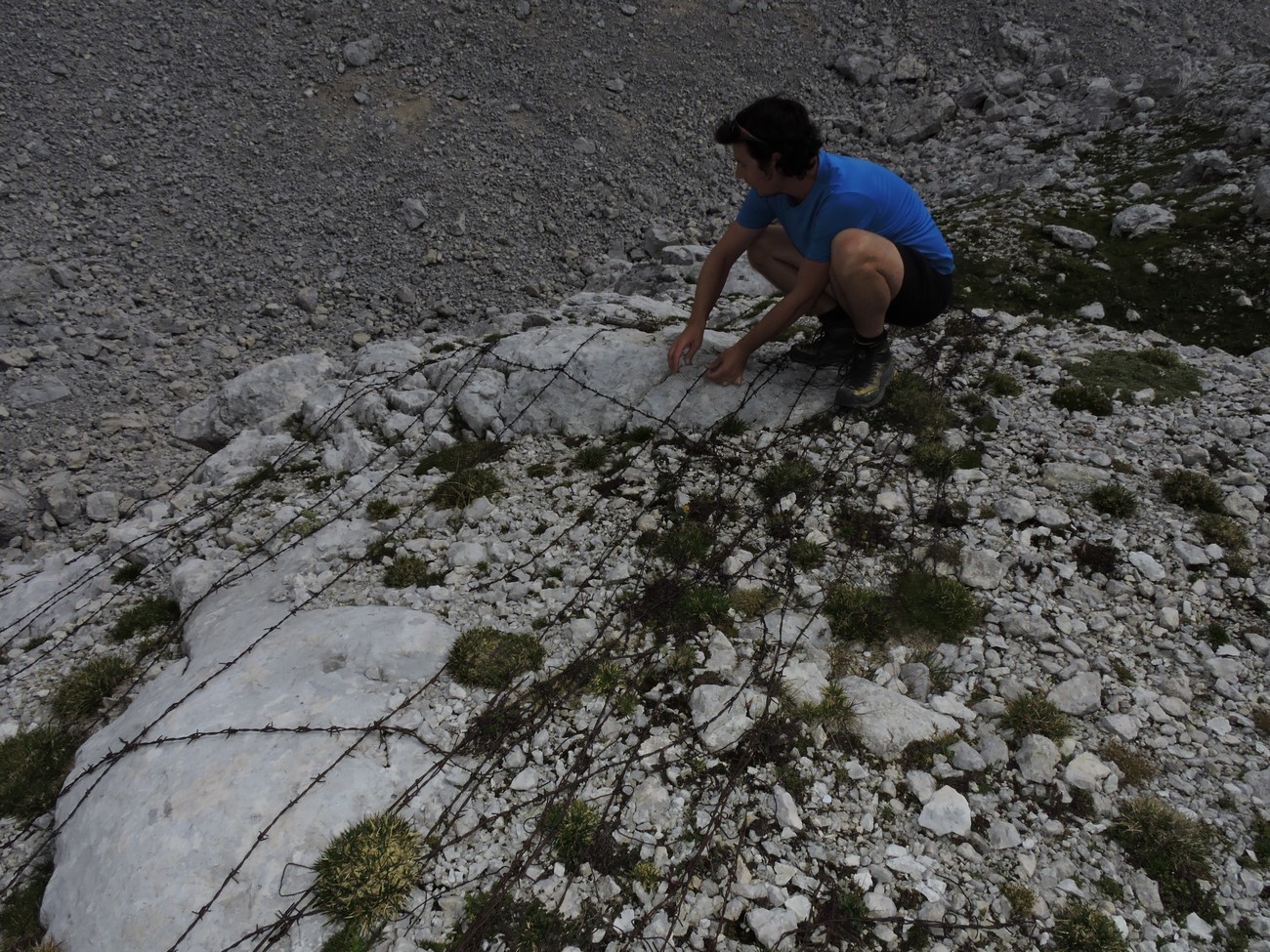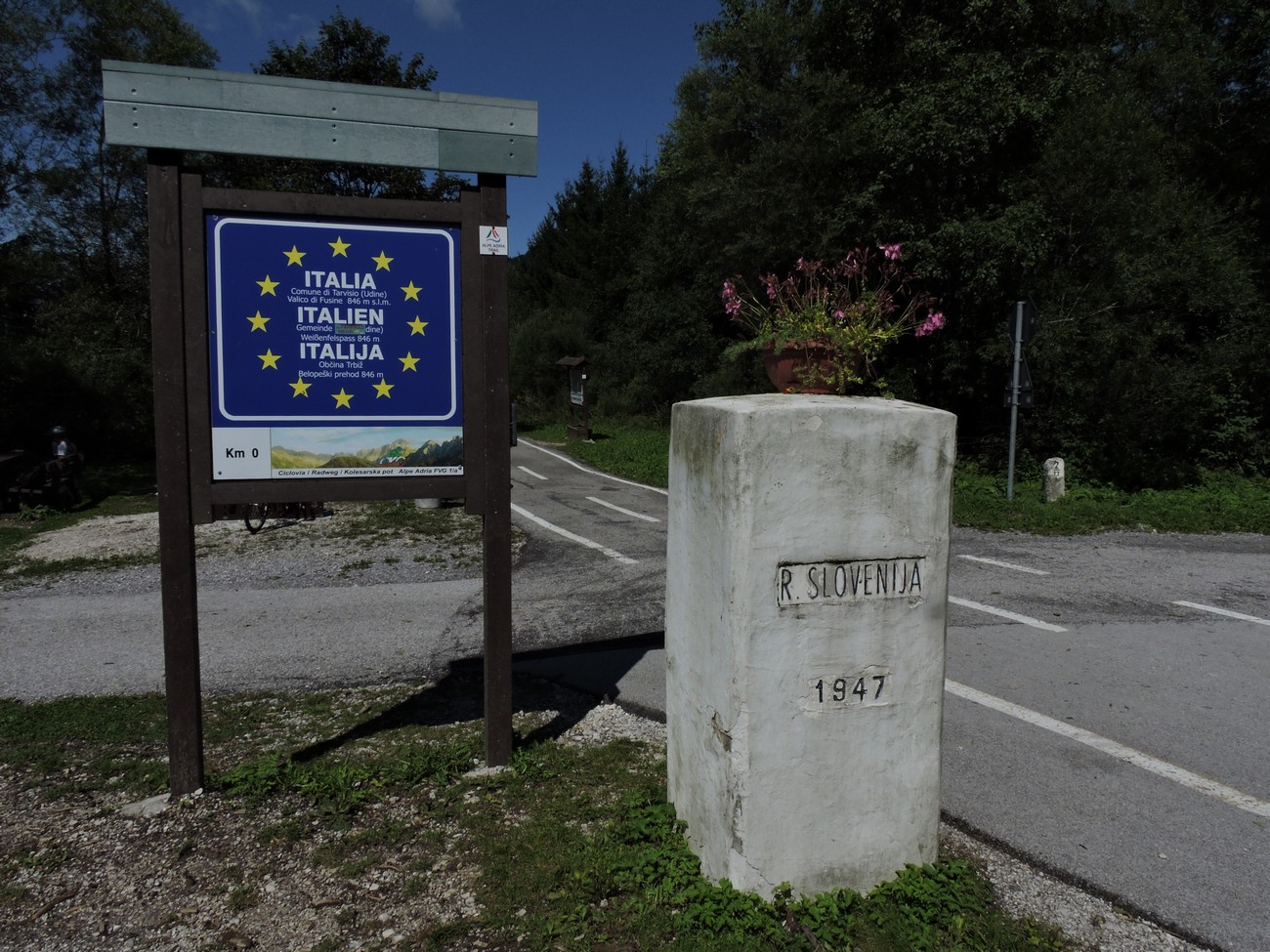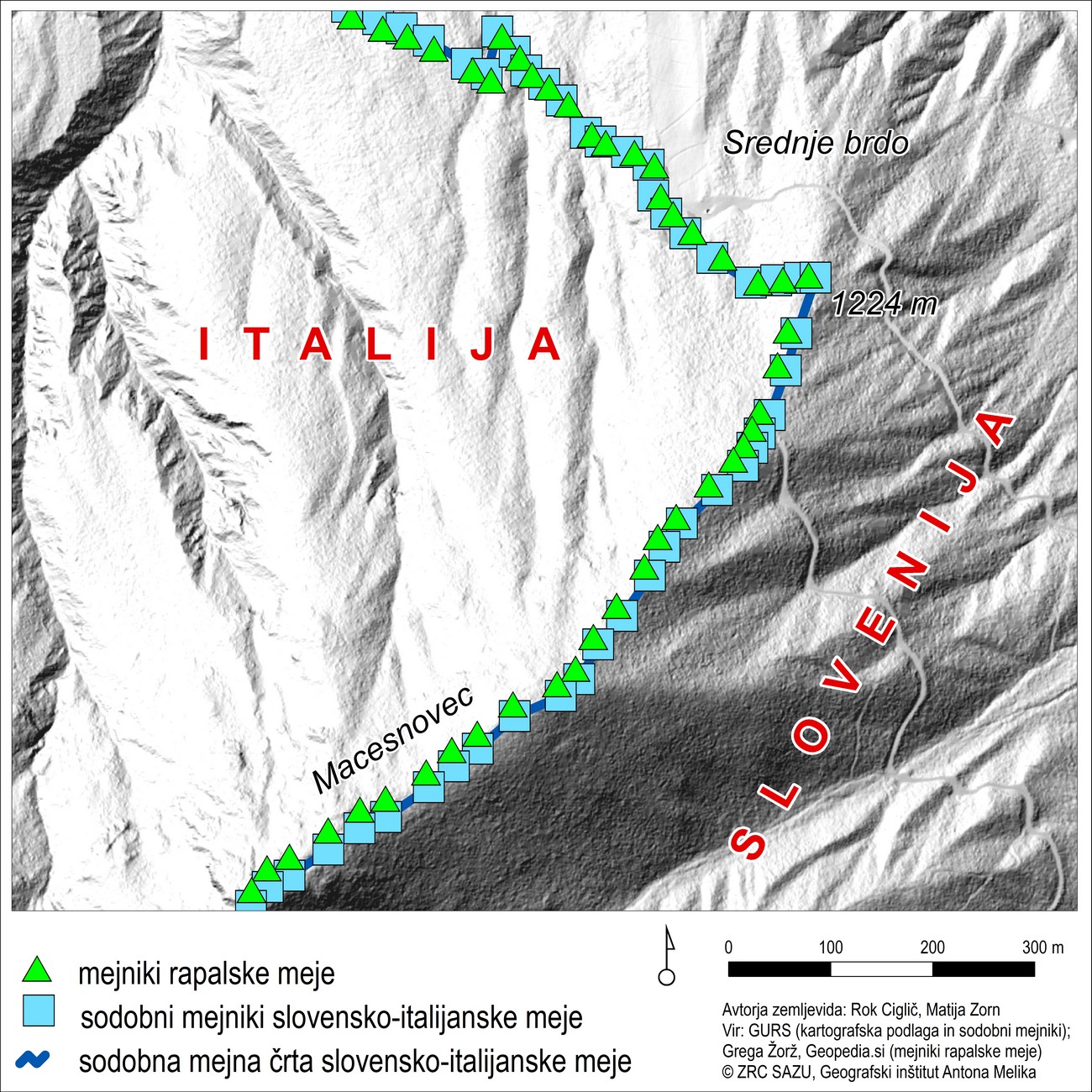In the high mountain range, the occupation border between Italy and Germany was based on the inter- war Rapallo border between the Kingdom of Italy and the Kingdom of Yugoslavia. The border ran along the watershed between the catchment area of the Adriatic and the Black Sea. Those who fixed the boundary made use of the existing boundary stones of the Rapallo border; on the German side they chiselled the letter “D” into the boundary stones to replace the previous letter “J” for Yugoslavia. On the Italian side, they kept the letter “I” on the boundary stones.
Just as the Rapallo border had run across Mount Triglav, so did the occupation border. This way, Germans once again took possession of Triglav, which they had “lost” after World War I – also on a symbolic level, because it was soon depicted on German postage stamps. In August 1944, the boundary stone on top of Triglav was removed by partisans under the slogan “Never another border on this peak!” On that occasion, they also hung the Slovene flag on its summit.
Because the Alpine relief was difficult to traverse, unpopulated and rarely contained paths, the border was intensively guarded mostly at the passes and cols across which ran paths and roads (Vršič Pass). Mountain huts on the German side of the border, which had been managed by the Slovene Mountaineering Society in the inter-war period, were given over to the German Mountaineering Society. In the summer of 1941, some of the huts were still maintained; later they were mostly abandoned, while many were destroyed so they could not be used as sanctuaries by partisans and refugees. In the autumn of 1941, the German Zoll- Polizei was stationed at the hut Aljažev dom in the Vrata Valley, which was renamed Kugy-Haus.
Today we can find only rare remains of the border as many of the boundary stones have been destroyed – either by the post-war destruction or by the mountain climate. Near the cols we can find remains of the barbed wire here and there.
After Italy capitulated, this de iure border was preserved as the border between Italy and Germany, but in reality it was the border between Germany and the Operational Zone of the Adriatic Littoral under German administration. One remnant of the Rapallo and occupation border is the present-day segment of the state border between Italy and Slovenia from Mount Peč (Tromeja) in the Karavanke Mountains, across the Ponce mountain range to the difficult-to-reach Mount Vevnica.
